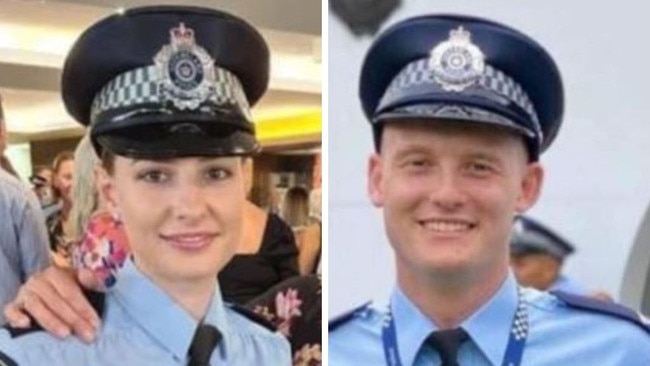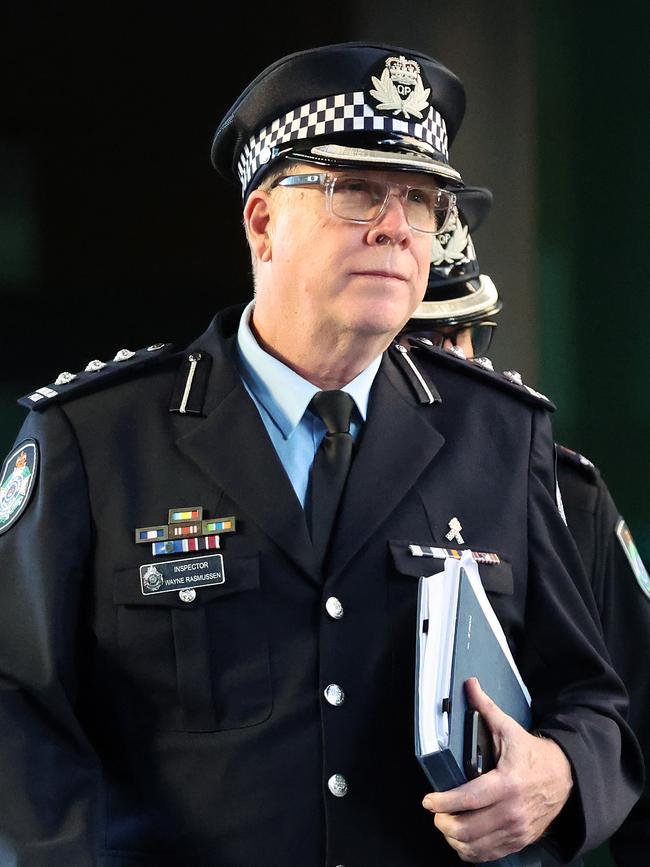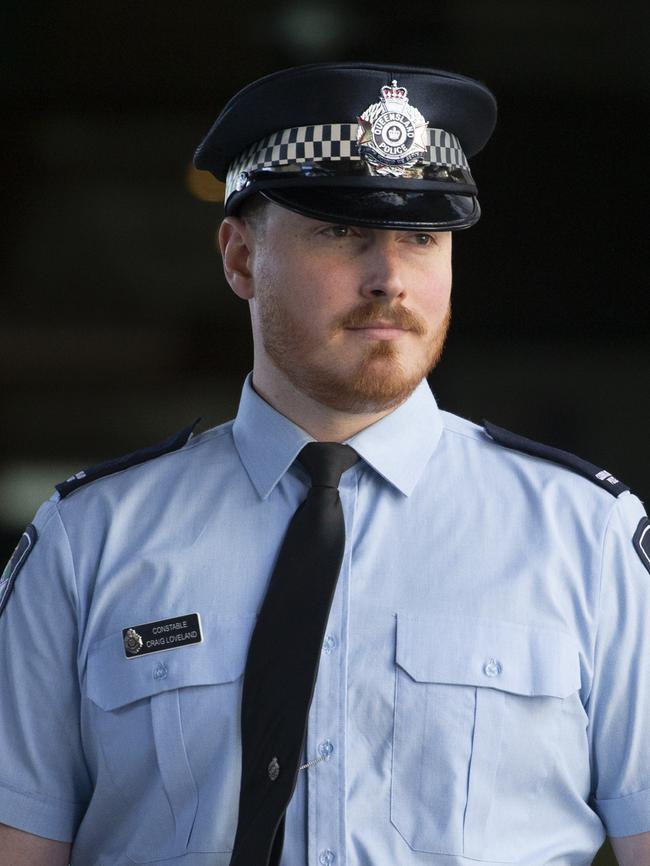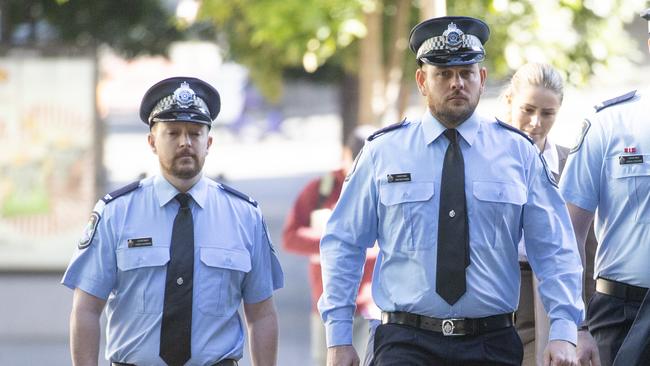Black spots, faulty equipment plagued first officers at Wieambilla shootout with Trains
Black spots, reception issues and a faulty car made it difficult for the first officers to respond to calls of ‘shots fired’ and assistance at the Wieambilla shooting, an inquest into the tragic incident has heard.

Police rushing to the deadly ambush of four fellow officers by Christian extremist gunmen told an inquest their rescue effort was hampered by communication problems from radio black spots around the remote Queensland property.
Five officers, among the first on the scene of the Wieambilla shooting in December 2022, told the fourth day of the coronial inquest that phone and radio network “black spots” at times rendered their police radios and devices unusable, and one officer was also forced to use a faulty police car to get to the scene.
All were speeding towards the Western Downs property under lights and sirens after reports four officers from Tara and Chinchilla had been ambushed while looking for missing school principal Nathaniel Train. Within minutes of the officers jumping the chained front gate at Wieambilla, Train and brother Gareth fired on them, killing constable Matthew Arnold and partner Rachel McCrow. Good Samaritan neighbour Alan Dare was also killed.


Constable Randall Kirk managed to escape in a police car after being shot in the hip, while new recruit Keely Brough was forced to hide in the bush for more than two hours as the Trains lit fires to flush her out. She was rescued by an extraction team.
Inspector Wayne Rasmussen was in charge of the forward command. As he raced from Dalby to Wieambilla, connection issues stopped him telling crews on the scene to organise a team to rescue Constable Brough. “Sometimes the radio channel came in and out, sometimes the phone works, sometimes it didn’t,” he said.
Only once he arrived did he find out Constable Brough had already been saved.
Constable Craig Loveland was forced to travel from Tara police station to Wieambilla in the station’s run-down reserve vehicle as Arnold and McCrow had taken the station’s main car.
A car window had been smashed by a rock months earlier, and Constable Loveland was forced to reconnect a battery that had been faulty.
En route, Constable Loveland’s police-issue Q-LiTE device kept dropping out and he had to change the frequency of his police radio to get reception in the black-spot area.
Both Chinchilla officers at the Trains’ property were forced to call for help on their mobile phones because their police radios were not working.
“You have to change channels depending on which area of Tara you’re at,” Constable Loveland said. “If you don’t change the channel over, it won’t work. It’s just static, and won’t receive or transmit.”
Within 10 minutes of driving towards Wieambilla, Dalby constables Matthew Owen and Christopher Sharman also had issues with the Q-LiTE, on which they were meant to receive incident updates.
“It’s on the same connection as your mobile phone,” Constable Owen said. “We would go through long stretches where we wouldn’t have service.”

The Dalby officers and Constable Loveland were first at the scene.
Constable Sharman told the inquest he misheard a “patchy” police radio call and believed another police crew was already at the Wains Rd property.
The three decided to drive down the unsealed road towards danger to help, and had to retreat.
Inspector Rasmussen also defended his decision to leave Dare’s body in the open overnight. The inquest heard Constable Brough’s extraction team also collected the fallen officers, but had bullets whizzing past their heads as they passed Dare’s body.
“It was tactically dangerous,” Inspector Rasmussen said.
“The risk versus reward in my mind didn’t equal exposing more officers.”
Dare, McCrow and Arnold received a guard of honour as their bodies were removed from the scene after the shooting.







To join the conversation, please log in. Don't have an account? Register
Join the conversation, you are commenting as Logout